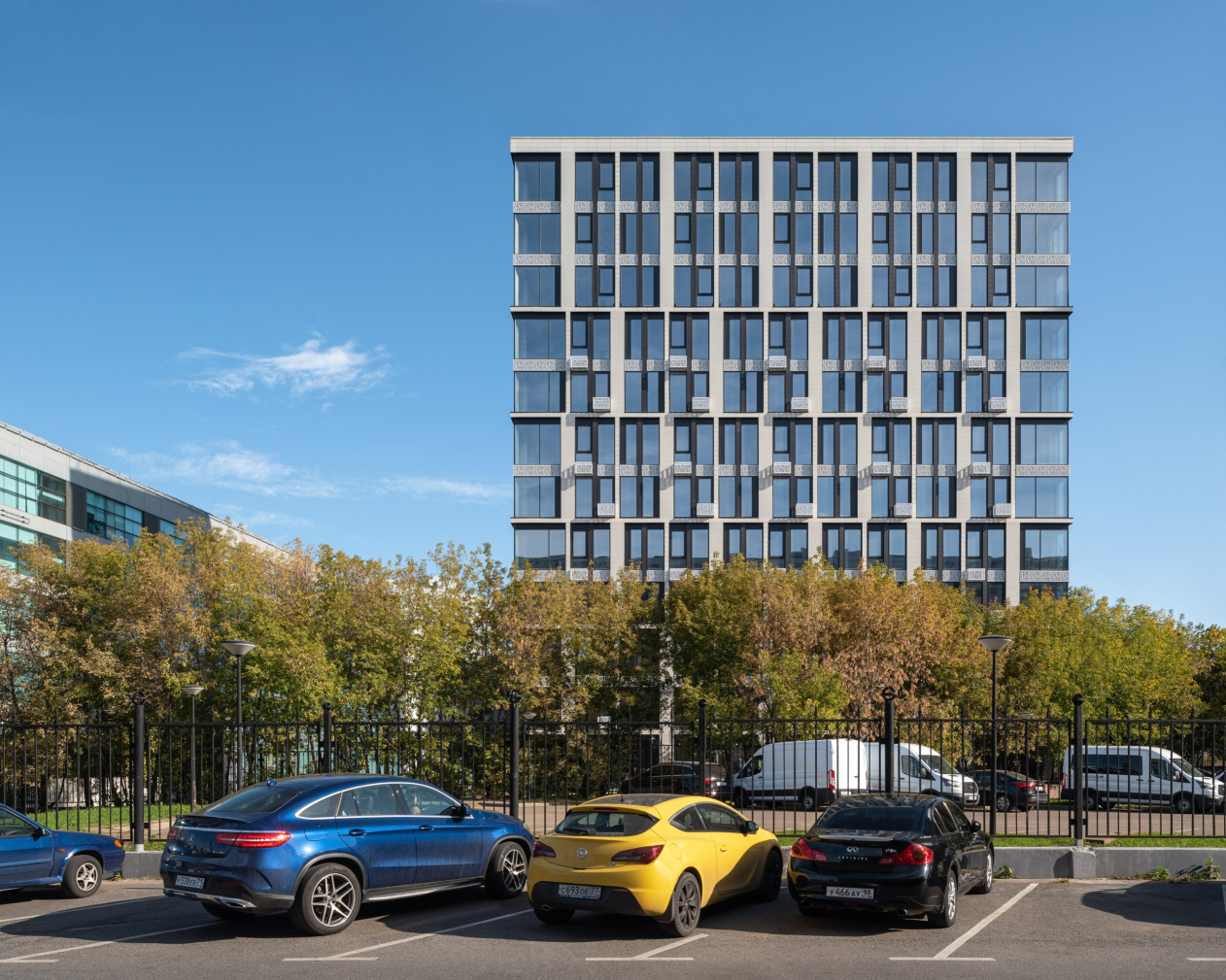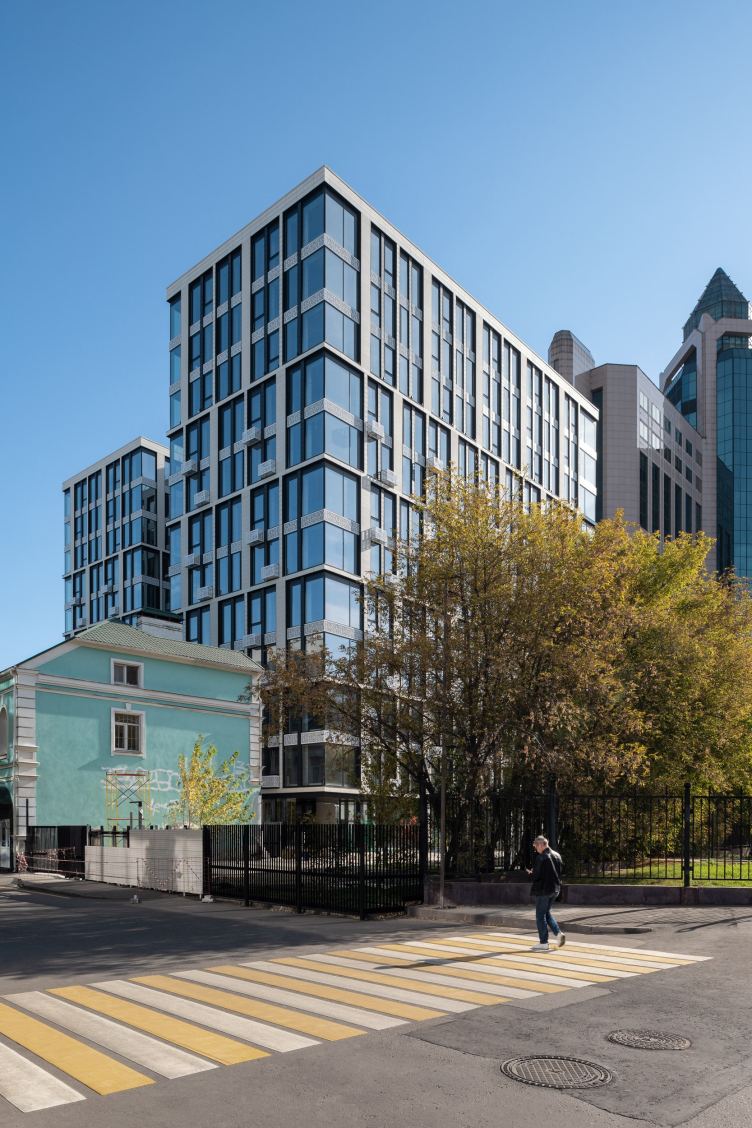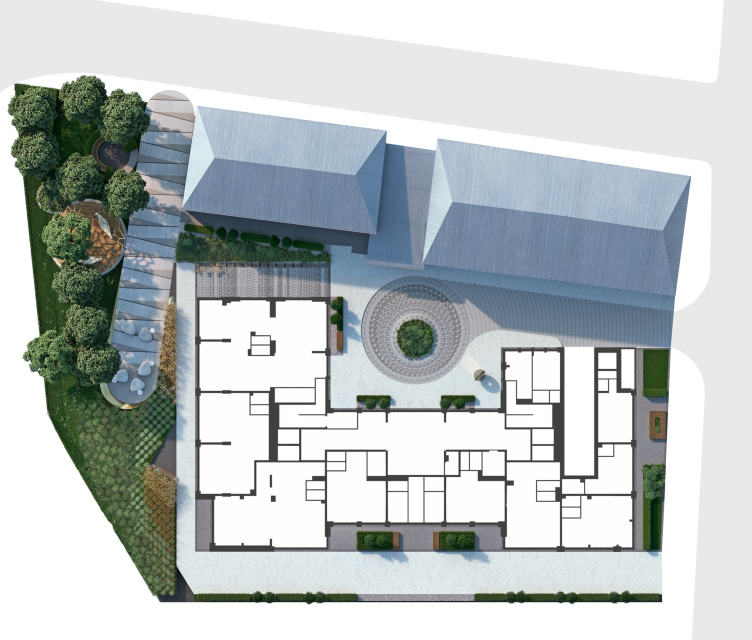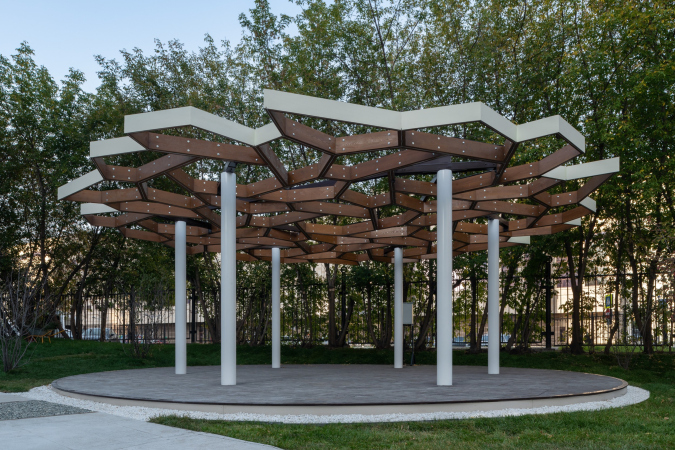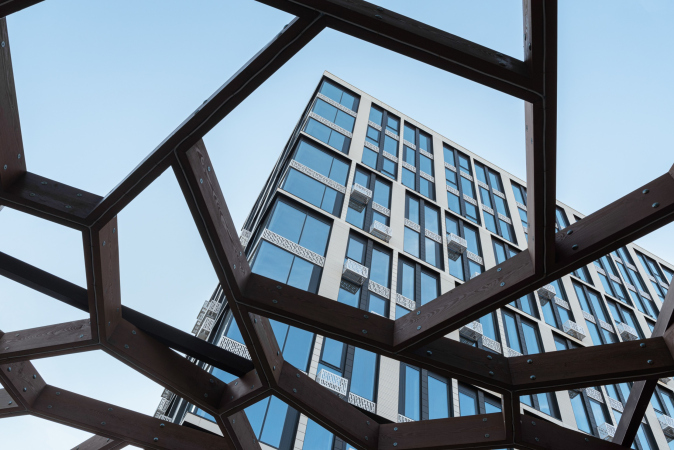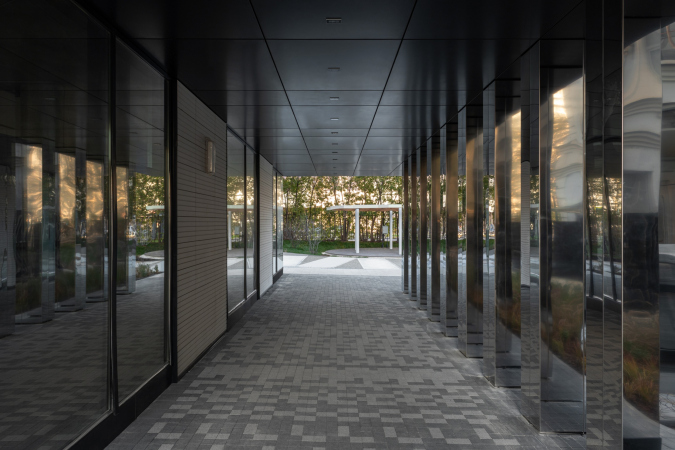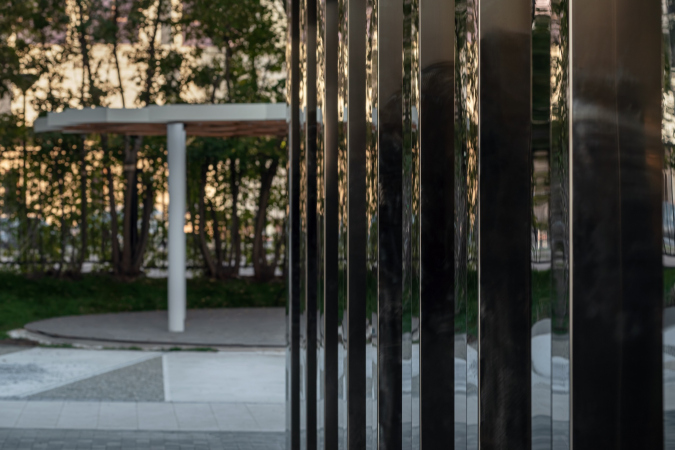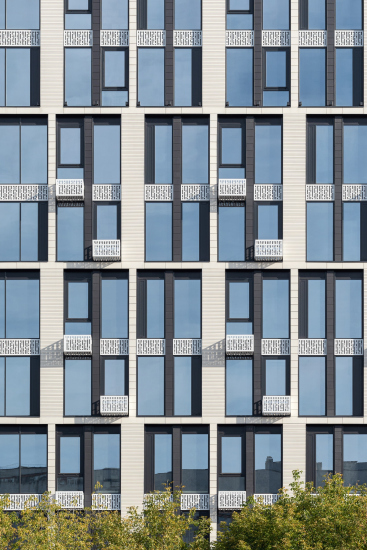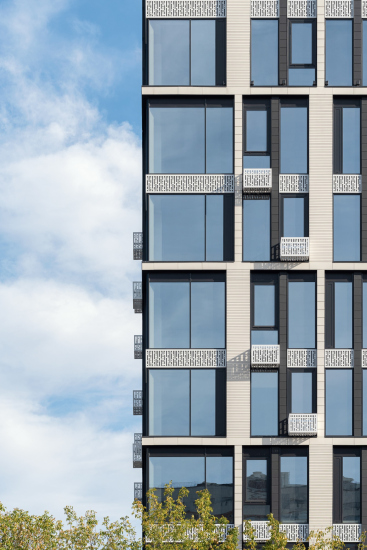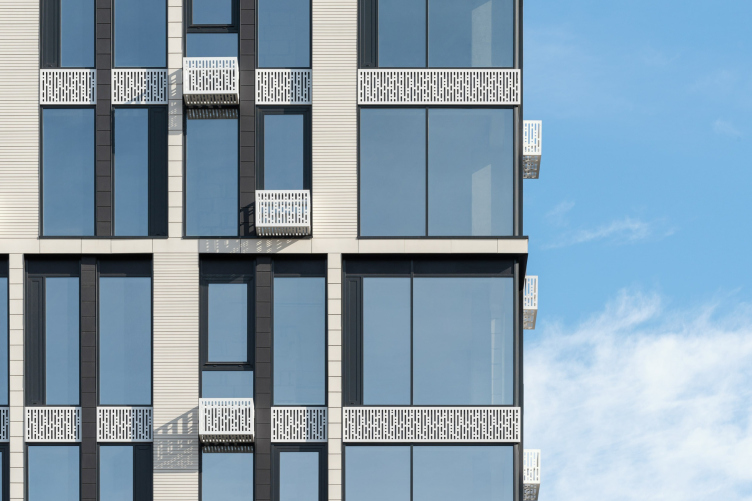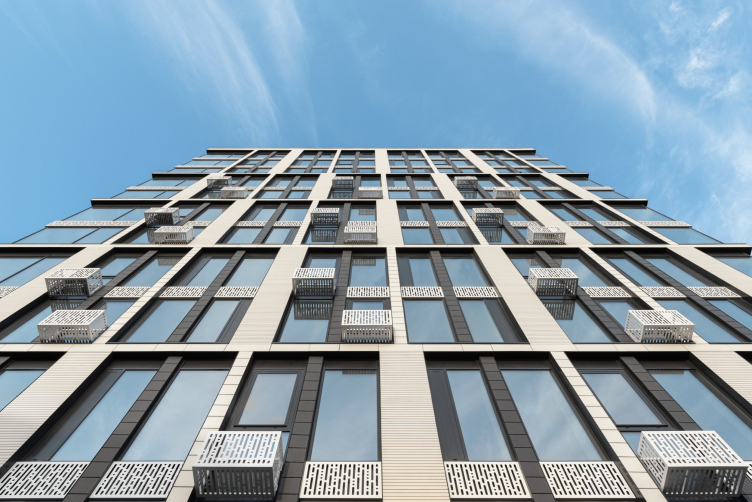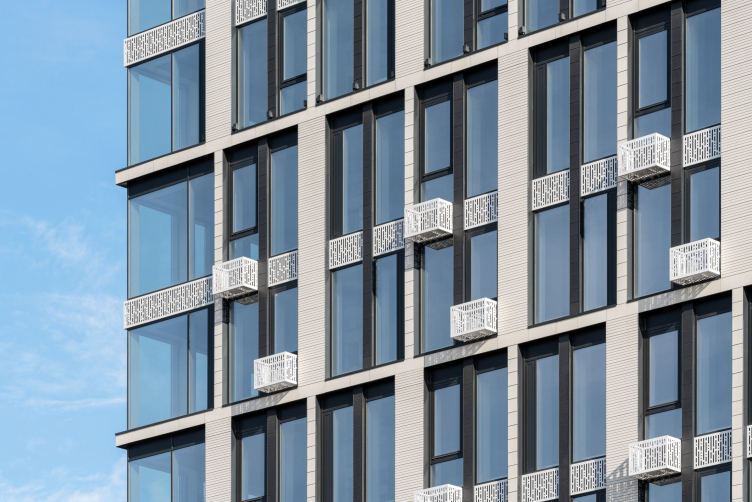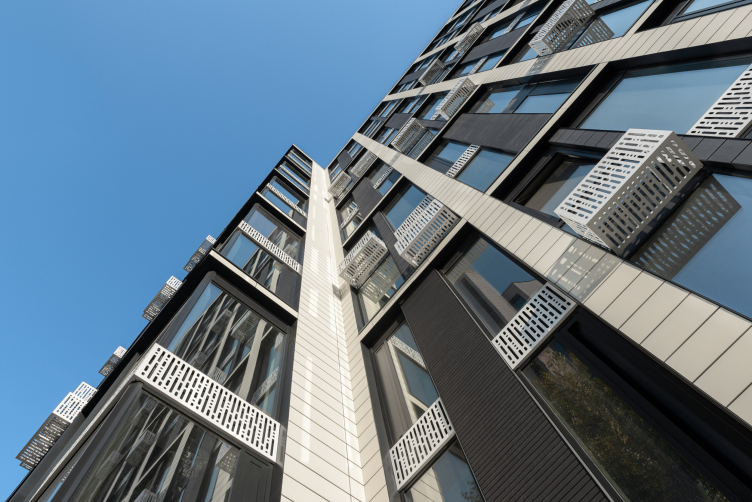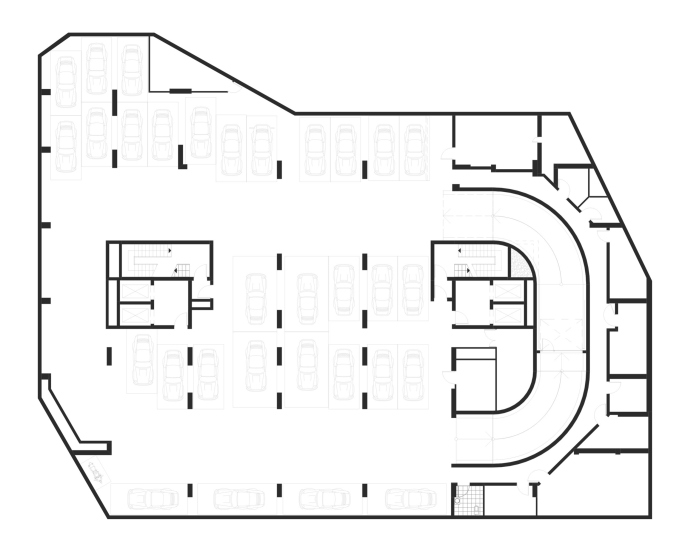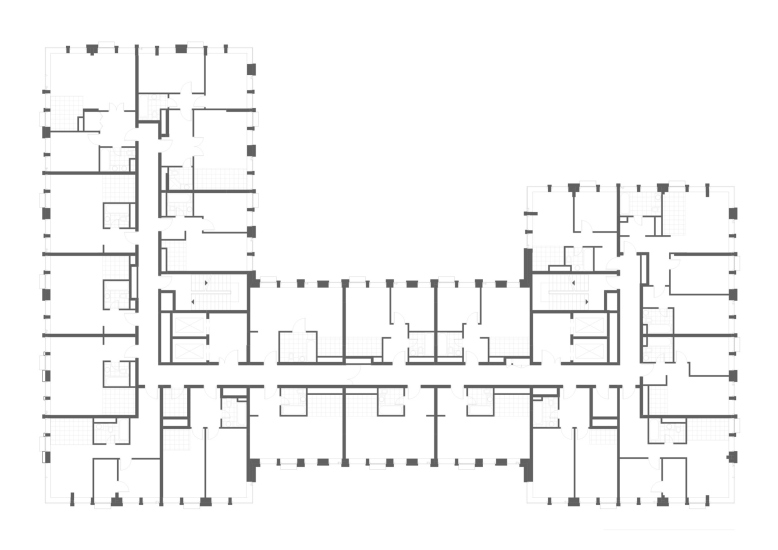PLAY apartment complex
Copyright: Photograph © Yaroslav Lukyanchenko / provided by ADM architects
In order to fulfill the task of improving the quality of this potentially livable environment, the authors of the project decided to first of all rely on professional urban planning solutions. The land site occupied by the apartment complex is rather small, and is sandwiched between two neighboring buildings; in addition, part of the territory is limited by the municipal heating network. Despite the high density of construction, inevitable in such a case, the architects paid special attention to designing convenient walking and driving entrances, and even found room for a tiny strip of parkland. In front of the entrance, there is a courtyard with decorative plants in the middle of it, and a drop-off area – a technique borrowed from classic architecture and testifying to the high status of the housing. The courtyard is hidden inside of the block, and its very existence became possible because the house has just one central entrance – the building has an “apartment” status, and, therefore, the layout featuring a central lobby turned out to be the most appropriate, two corridors running in two opposite directions from it.
The master plan. PLAY apartment complex
Copyright: © ADM
The yard and the little park belong to the residents of the house, creating the coveted “private” feel. For the other residents of this area, the architects created a passage running along the side of the house opposite to the courtyard – this in-block promenade can be accessed from the side-street because the first floor of the complex is designed to host the retail function; the whole composition creates a lit of “air” – something that turns city space into living environment. This way, the planning solution, developed in the circumstances of a very constrained jigsaw puzzle, allowed the architects to both take into account the interests of the residents and make the urban space even livelier and more convenient, enriching it with new possibilities.
Generally speaking, this master plan of a housing complex, where the outside contours of the construction are focused on the city, and the yard space is designed solely for the residents, is something that ADM architects consider to be the best solution, trying to stick to it in their every project.
PLAY apartment complex
Copyright: Photograph © Yaroslav Lukyanchenko / provided by ADM architects
Yet another means of enriching the environment, just as important, is the building of the apartment complex itself – according to the architect of the project, Andrey Romanov; a high-quality architecture will always make the city space better, whatever the context. As far as its volumetric and spatial composition is concerned, the complex is rather laconic: all its beauty lies in the facade development. The authors of the project intuitively tied in the facade with the genius loci: they gave it an industrial character, undaunted either by its conflict with the residential function or by the inevitable “coldness” of such allusions. The facade echoes the industrial past of Danilovskaya Sloboda, and this solution appears to be very appropriate, even if the architects themselves deny the reasoned rationale of their choice and even the presence of such methods in their work.
Shining with the contrast of black and white, the facade becomes the centerpiece of the city block – perception-wise, not in terms of mass or height. This black-and-white grid was created by the architects using the method of freehand drawing, when the author relies on his or her intuition and sense of beauty. The “disrupted” scale of the facade, visually uniting two floors into one, again refers to the techniques of classical architecture, and I must say that at the time of its design, this technique was super relevant – architecture is also subject to fashion. Here, however, the dual grid was not drawn in a mechanical way – its proportional structure is sophisticated and defies logical calculations, it is full of shimmering rhythms, sometimes overlapping, sometimes growing thinner. Thanks to it, the facade looks non-static and expresses an irrational understanding of proportions – one that cannot be explained, but is perceived by the observer. In its meaning, the rhythm of this grid is close to curvatures, and, even though this speculation is a bit far-fetched, it does reflect its intuitive and humanistic meaning.
PLAY apartment complex
Copyright: Photograph © Yaroslav Lukyanchenko / provided by ADM architects
PLAY apartment complex
Copyright: Photograph © Yaroslav Lukyanchenko / provided ADM architects
The image of the building also determined the decoration of the facade – the architects selected volumetric porcelain slabs for it. According to the authors of the project, this sturdy and durable material is more appropriate for public buildings, and it is a little bit too pristine for a housing complex. However, the “industrial” image of the building required precisely this kind of decoration – a luminous satin cool sheen and a grid emphasizing the contrast. The industrial image of the building is further enhanced by the large glass surfaces – these are not openable, and, therefore, are not fractured with imposts. The contrast is also softened by openwork panels of the air conditioning unit baskets. The presence of these baskets is considered to be a compromise by the architects because they normally prefer to install central heating and air conditioning systems in the buildings that they design.
PLAY apartment complex
Copyright: Photograph © Yaroslav Lukyanchenko / provided by ADM architects
The tall first floor, as was already mentioned, is meant to be rented out to shops and other local businesses: on the facade, this part is visually turned into a gallery – again, with a reference to the classic examples and just to tradition, because this is how, with a covered loggia on supports, it was customary to decorate trading rows with shops in all eras, from antiquity to Russian classicism.
Summarizing the impression of the new housing complex, we can say that through its intuitive references to patterns lying in the subconscious, references that barely denote the original source and are reproduced within the framework of completely modern forms and approaches, ADM architects deliver an architecture from which anyone who is exposed to it -be that a resident or a casual passer-by – get satisfaction. And when a space becomes attractive to the public, a high-quality environment is drawn to it automatically.

PLAY apartment complex
Copyright: Photograph © Yaroslav Lukyanchenko / provided by ADM architects

